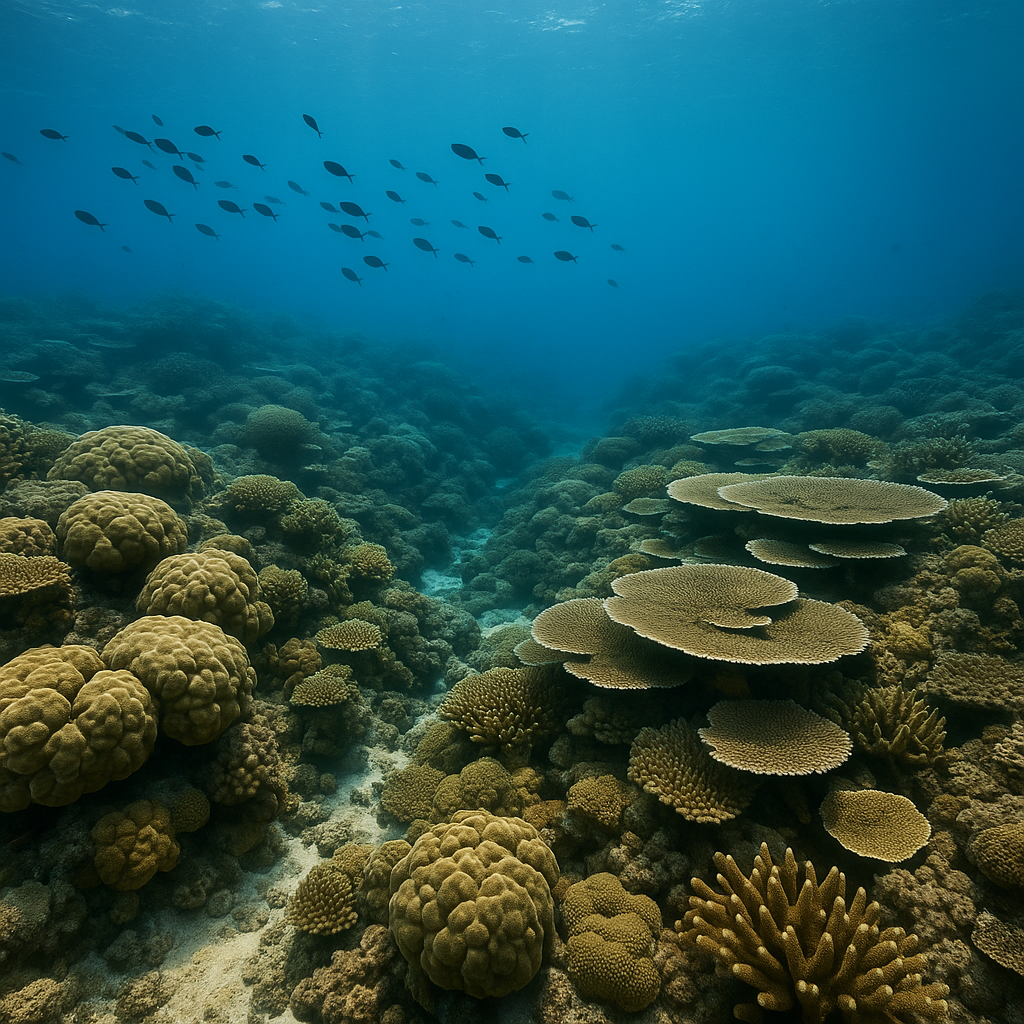Great Barrier Reef under pressure amid rising climate threats
Modern reefs are under unprecedented stress from marine heat waves, increasing storm intensity, and acidification, compounded by human pressures such as overfishing, industrial development, and poor water quality linked to land use. Against this backdrop, the lessons of the Devonian reef highlight that reef survival depends on more than coral recovery, it requires the maintenance of entire framework systems.

- Country:
- Australia
A new study warns that the survival of the modern Great Barrier Reef may depend on lessons drawn from its 360-million-year-old Devonian predecessor. By comparing reef structures across geologic time, a new study identifies critical patterns in reef formation and decline that could determine the fate of one of Earth’s most iconic ecosystems.
The paper, “Australia’s Two Great Barrier Reefs: What Can ~360 Million Years of Change Teach Us?” published in the Journal of Marine Science and Engineering (JMSE), examines how the present-day Great Barrier Reef Province (GBRP) and the ancient Devonian reef of Western Australia’s Canning Basin reflect enduring structural and environmental controls. Despite vast differences in climate, seawater chemistry, and biota, the study reveals striking parallels that shed light on the vulnerabilities of coral reefs in a rapidly changing world.
What ancient reefs reveal about modern vulnerability
The research argues that both ancient and modern reefs rely on the balance between framework builders and framework binders. Corals and other carbonate producers have traditionally been seen as the foundation of reef ecosystems, but the author, Gregory E. Webb, stresses that without binders such as coralline algae, microbialites, and early cementation processes, reef structures lose cohesion. This lesson emerges strongly from the Devonian reef system, where successful reef-building required both elements in tandem.
For today’s Great Barrier Reef, this insight carries urgent implications. Public and policy debates often fixate on coral bleaching events driven by marine heat waves, yet the author shows that ocean acidification may be an equally critical danger. Acidification directly undermines the ability of reef binders and early cements to unify carbonate frameworks, threatening the very physical integrity of reefs. The study warns that a singular focus on bleaching risks obscuring the broader chemical threats to reef survival.
How sea-level and geology shape reef futures
Webb points out the structural role of sea-level oscillations and geological context. In both ancient and modern cases, significant vertical relief in reef systems was linked to high-amplitude sea-level cycles. These oscillations, often driven by icehouse climates, created the accommodation space necessary for large carbonate platforms to develop.
The modern Great Barrier Reef Province also shows unexpected geological dynamism. While often characterized as part of a stable passive margin, evidence reveals significant subsidence and sequences of stacked Pleistocene–Holocene reefs shaped by reactivated faults. This structural backdrop underscores that reef development is as much a function of Earth’s shifting crust as of biology. For managers and conservation planners, this means that reef futures cannot be decoupled from long-term geologic and sea-level processes.
Why past patterns matter for future conservation
Webb’s study situates the Great Barrier Reef within a longer evolutionary and geomorphic history that spans hundreds of millions of years. By identifying recurring patterns in reef formation, collapse, and resilience, the research provides tools to anticipate how today’s reefs may respond to the combined pressures of climate change and ocean chemistry shifts.
Modern reefs are under unprecedented stress from marine heat waves, increasing storm intensity, and acidification, compounded by human pressures such as overfishing, industrial development, and poor water quality linked to land use. Against this backdrop, the lessons of the Devonian reef highlight that reef survival depends on more than coral recovery, it requires the maintenance of entire framework systems. The resilience of reef binders and the preservation of conditions that allow early cementation to occur are as critical as strategies aimed at coral protection.
The study also underscores the scale of the stakes. The modern Great Barrier Reef supports food security, livelihoods, coastal protection, and cultural value for hundreds of millions of people worldwide. Its ecological services far exceed its geographic footprint, meaning that its decline would reverberate across economic and social systems globally. By placing the GBRP in conversation with its ancient analogue, the study reframes reef conservation not as an isolated ecological concern but as a structural necessity with planetary implications.
A call for comprehensive reef management
The study demands a shift in how scientists, policymakers, and the public conceptualize reef health. Focusing solely on coral bleaching is inadequate in the face of broader structural threats. Ocean acidification, sea-level changes, geological dynamics, and human impacts combine in complex ways to determine reef futures.
Conservation strategies must therefore adopt a multifactorial approach, targeting not only biological resilience but also chemical, physical, and structural integrity.
- FIRST PUBLISHED IN:
- Devdiscourse










